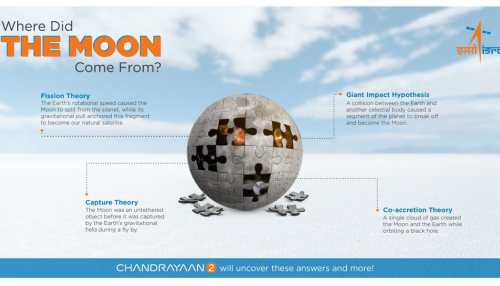- News>
- India
Where did Moon come from? ISRO`s intriguing tweet ahead of Chandrayaan 2 launch

Chandrayaan 2, Indian lunar mission, will go to Moon`s south polar region where no country has ever gone before
Ahead of the launch of the much-awaited Chandrayaan 2, India's second lunar mission, the Indian Space Research Organisation (ISRO) posted a tweet around one of the most baffling scientific debates in the world: the origin of the Moon.
“Where Did Moon come from?” tweeted the space agency along with an image, explaining the four existing theories behind Moon's origin. The theories are:
1. Fission Theory
The Earth's rotational speed caused the Moon to split from the planet, while its gravitational pull anchored this fragment to become our natural satellite.
2. Giant Impact Hypothesis
A collision between the Earth and another celestial body caused a segment of the planet to break off and become the Moon.
3. Co-accretion Theory
A single cloud of gas created the Moon and the Earth while orbiting a black hole.
4. Capture Theory
The Moon was an untethered object before it was captured by the Earth's gravitational field during a fly by.
“Which of these theories is correct?” asks ISRO, adding, “Is there a fifth alternative that no one else has considered?"
“We are looking to find the answer to these questions and more through Chandrayaan 2 — the world’s first mission to the Moon’s south polar region! CHANDRAYAAN 2 will uncover these answers and more!” tweeted ISRO.
Chandrayaan 2, Indian lunar mission, will go to Moon's south polar region where no country has ever gone before. It is India’s first rover-based space mission. The mission will be launched on July 15 at 2.51 am. The soft landing on Moon's surface is likely to be on September 6 or September 7.
One of the most complex missions attempted to date, Chandrayaan 2 weighs 3.8-tonne and consists of an orbiter with eight scientific experiments, a lander with three experiments, a rover with two experiments and an experiment from the US space agency NASA.
